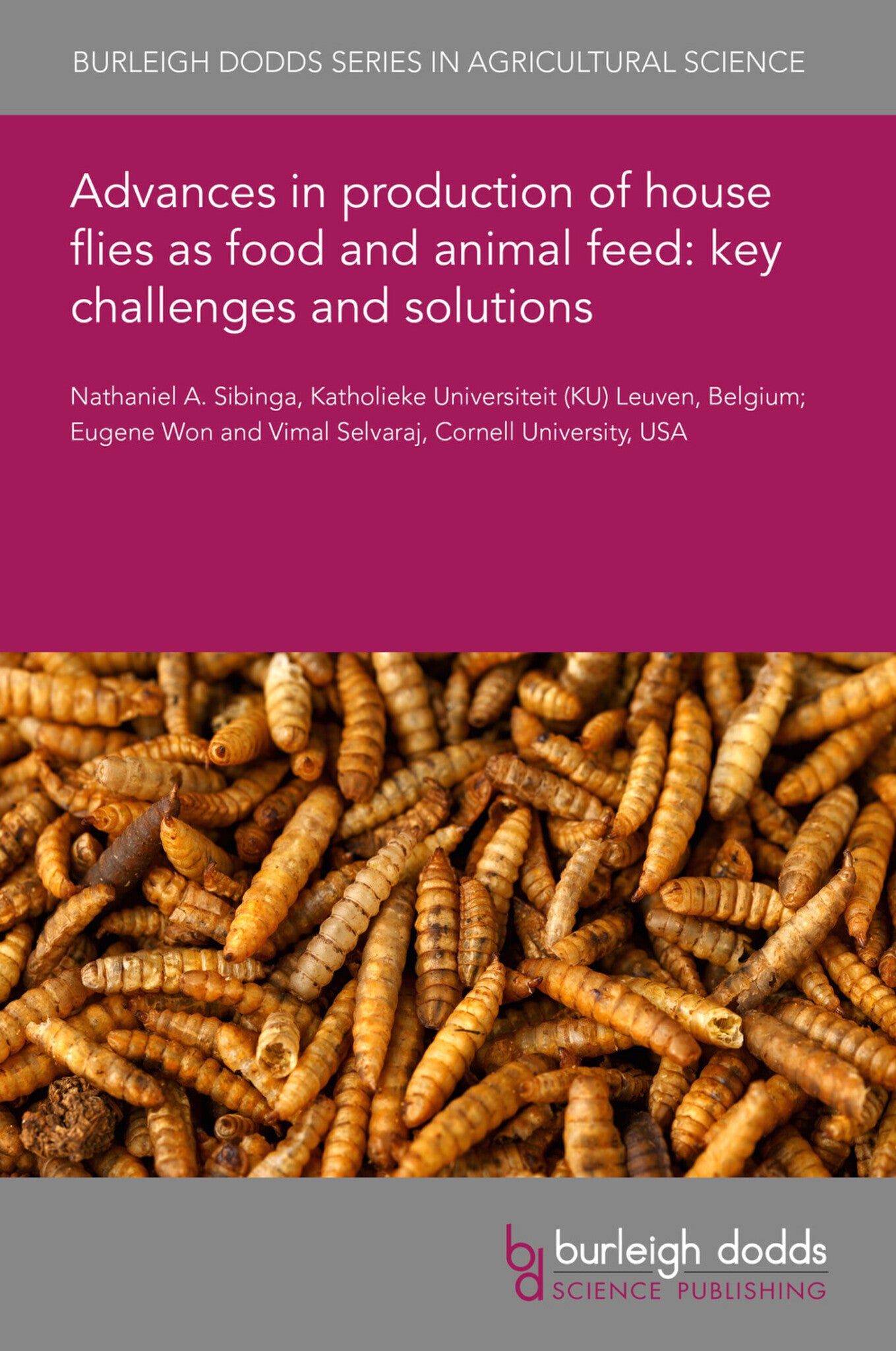We're sorry. An error has occurred
Please cancel or retry.
Advances in production of house flies as food and animal feed: key challenges and solutions

Some error occured while loading the Quick View. Please close the Quick View and try reloading the page.
Couldn't load pickup availability
- Format:
-
11 February 2025

The common housefly (Musca domestica), a ubiquitous presence in various environments, has been a subject of scientific investigation for over a century. This chapter explores the potential use of housefly larvae as a sustainable animal feed ingredient. Their ease of rearing, rapid growth, high nutritional value, and environmental benefits in nutrient recycling have revived interest in using them as an alternative protein source for food and feed. Despite these advantages, housefly larvae have not achieved significant commercial viability. The chapter examines key challenges and ways of achieving successful commercial production.

TECHNOLOGY & ENGINEERING / Food Science / Chemistry & Biotechnology, Food and beverage technology, TECHNOLOGY & ENGINEERING / Food Science / Food Safety & Security, Food security and supply, Food chemistry

- 1 Introduction
- 2 The evolution of research on houseflies
- 3 The housefly life cycle
- 4 Production parameters and issues: temperature, stocking density, and propagation
- 5 Production parameters and issues: feed substrate and harvesting/collection
- 6 Nutritional value of houseflies as a feedstuff
- 7 Unresolved issues facing commercial housefly production
- 8 Conclusion and future trends
- 9 References



